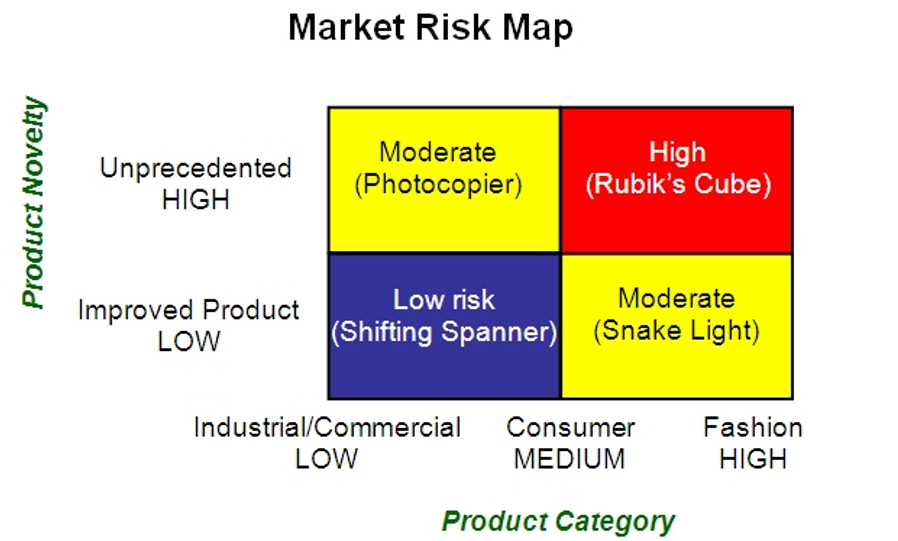“But I thought it was a great idea!”
Without doubt market risk, the likelihood that you can’t find a market for your new product or service, is the single biggest risk in business and where most new products or ventures fail.
In looking at market risk, the simple diagram below represents a good way to look at markets and is a good starting point in evaluating a new venture.

Categories
Every product or service in the world fits into one of the above three categories, Industrial/Commercial, Consumer or Fashion. Some products, for example a light globe, may fit into all. Imaging a miner’s light as industrial, an office light as commercial, a domestic light as consumer and a chandelier as fashion.
The question to consider is “where does your offering fit”.
If it’s in the industrial commercial space you may well be able to quantify the real benefit it delivers and thus build a strong selling message or “Value Proposition”. On the other hand, consumer products are often selected by purchasers as trusted brands or on price, whereas in the fashion space, it’s almost impossible to understand the purchaser decision making process. For certain with fashion, brand is number 1, so if you don’t have a strong expensive brand image trying to launch anything new in this space is highly risky business.
On the vertical axis we see degree of novelty. This means how new is my idea and will people understand what I am offering. Believe it or not, really new things often take a long time to be accepted. Indeed there is a strong rationale for not being first at all but coming to market second on the back of somebody else’s success but doing it better. There is even a formal business strategy referred to as “fast second”.
None the products or services listed below was first to market, but all at some stage became the dominate players.
- PayPal
- Nokia
- I-Phone
- VISA and MASTERCARD
- Seiko
- IBM PC
Where to from here?
Understand where your offering fits on the market risk map when you are developing your business strategy. Ideally you should be in the lower left hand corner, but if you are not, there are techniques referred to as “coupling” that we use to have products perceived in the customer’s eyes as really fitting into the bottom-left corner, even when they are not.
Roger La Salle, www.innovationtraining.com.au
















